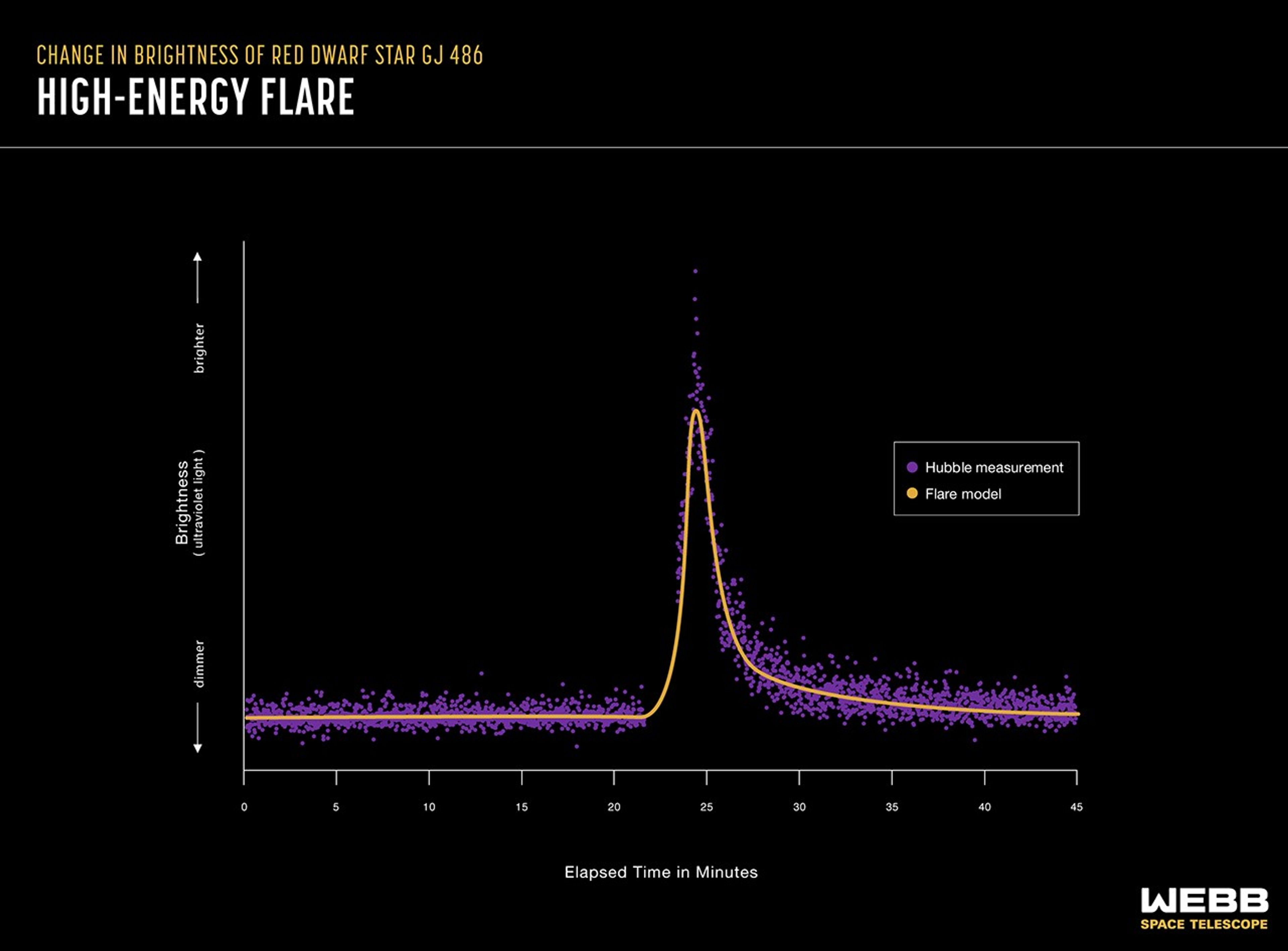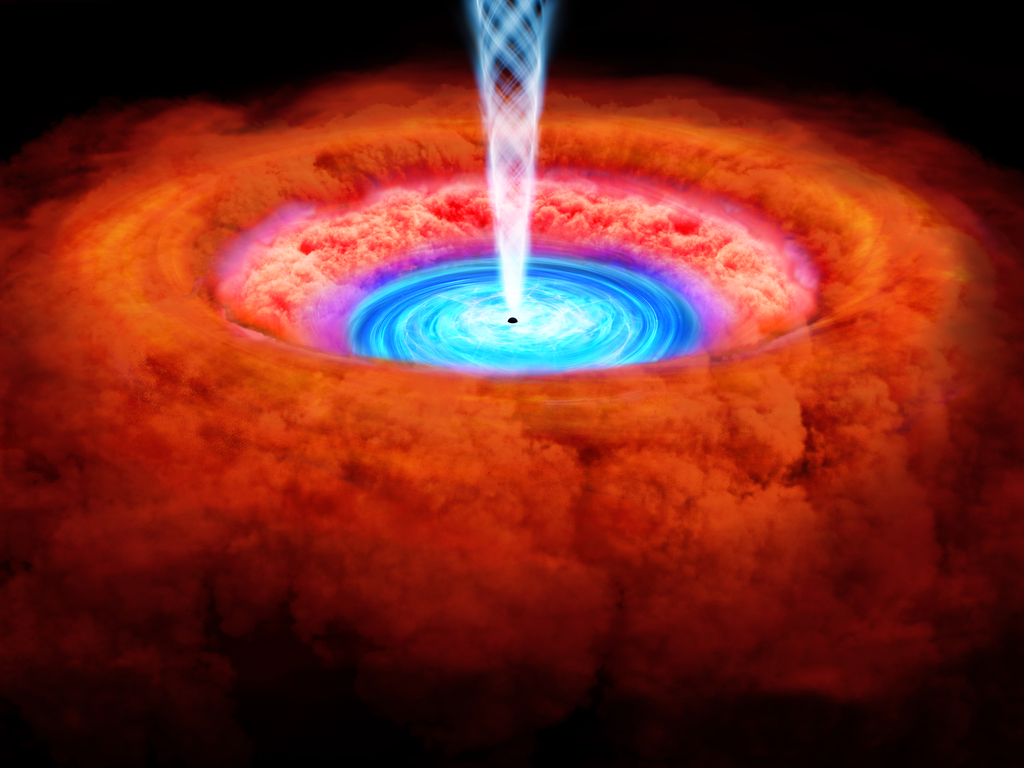1 min read
Red Dwarf Light Curve: High-Energy Flare

This light curve shows a flare of bright ultraviolet light emitted by a red dwarf star. Stars that appear calm in the visible part of the spectrum can be sending out powerful flares of invisible high-energy radiation that can strip away a planet’s atmosphere over time. It is impossible to know exactly how much ultraviolet energy any given star is sending out into its environment without measuring it with Hubble. This graph shows measurements of red dwarf star GJ 486 captured by Hubble’s COS (Cosmic Origins Spectrograph). GJ 486 is not part of the Rocky Worlds program.
About the Object
- R.A. PositionR.A. PositionRight ascension – analogous to longitude – is one component of an object's position.12h 47m 56s
- Dec. PositionDec. PositionDeclination – analogous to latitude – is one component of an object's position.09d 44m 58s
- ConstellationConstellationOne of 88 recognized regions of the celestial sphere in which the object appears.Virgo
- DistanceDistanceThe physical distance from Earth to the astronomical object. Distances within our solar system are usually measured in Astronomical Units (AU). Distances between stars are usually measured in light-years. Interstellar distances can also be measured in parsecs.26 light-years
About the Data
- Data DescriptionData DescriptionProposal: A description of the observations, their scientific justification, and the links to the data available in the science archive.
Science Team: The astronomers who planned the observations and analyzed the data. "PI" refers to the Principal Investigator.ultraviolet light curve
- InstrumentInstrumentThe science instrument used to produce the data.COS
- Exposure DatesExposure DatesThe date(s) that the telescope made its observations and the total exposure time.June 24 and June 30, 2022
- FiltersFiltersThe camera filters that were used in the science observations.G130M
- Object NameObject NameA name or catalog number that astronomers use to identify an astronomical object.GJ 486 (Wolf 437)
- Object DescriptionObject DescriptionThe type of astronomical object.Red dwarf (M-dwarf) star
- Release DateSeptember 30, 2025
- CreditIllustration: NASA, ESA, CSA, Andi James (STScI); Science: Hannah Diamond-Lowe (STScI)
Share
Details
Last Updated
Sep 30, 2025
Contact
Media
Laura Betz
NASA’s Goddard Space Flight Center
Greenbelt, Maryland
laura.e.betz@nasa.gov


























